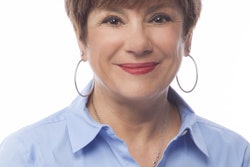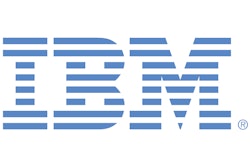It’s a supply chain fact—distribution center (DC) managers are responsible for DC costs but they do not control most of the decisions that drive those costs. Think about it: you as a DC manager are held accountable for the labor, equipment, utility and other overhead expenses in your DC but many of the decisions that directly impact these expenses are made by people outside the DC—typically in the buying or sales group (depending on your business type). For example, buyers negotiate how products are packaged by suppliers; sales staff make service delivery commitments to business customers; or customer care commits to additional product preparation to fix an issue with an important customer.
It’s also well established that managing costs is a critical success factor for most supply chains. In fact, in its “DC 2012 Measures” study from the Warehousing Education and Research Council (WERC), over 53 percent of its 802 survey respondents state that cost leadership is a leading business strategy for their company. (Other leading strategies included product/market innovation and customer service).
And while the idea of cost to serve analysis is not new, the challenge up to now has been: ‘How do you come up with timely and accurate enough cost information without sending your finance staff to spreadsheet hell or buying a supercomputer from IBM?’
What’s recently changed is that technology vendors are now starting to build cost-effective solutions that perform various types of cost to serve analysis on the supply chain. The best of these solutions take a fully automated approach and calculate cost to serve by item and customer on a continuous basis based on granular (i.e. transaction) based information. Careful evaluation and selection amongst the various technology choices can lead you to a solution that could literally change your life as a DC manager.
Use metrics to be a cost leader
According to WERC’s findings, the benchmark metrics for top 20 percent performers are:
- Distribution costs as a percent of sales are less than 1.6 percent (most other companies range from 2.9 percent to 8.9 percent and more)
- Distribution costs per unit shipped are less than $0.30 (most other companies range from $0.83 to $10 and more)
- Days on hand inventory is less than 15 (most other companies range from 30 to 78 and more)
- Shrink as a percent of total inventory is less than 0.1% (most other companies range from 0.2 percent to 1.8 percent and more)
So what does it take for your company to be in the top 20 percent? One of the main issues is that most companies do not have visibility to the true costs and profit impact of all of the decisions made outside the DC on an item by item, or customer by customer basis. If a DC manager could expose the true costs for handling each item and customer and could show the impact of the decisions made to the rest of the organization, it would change the internal conversation. That change would shift the conversation from: ‘When are you going to get this done?’ to ‘How are we going to get this done cost efficiently?’” Once costs are known to all, no one can ignore them. Now, that’s a fact of life.
Sounds good, right? But the only other question is: ‘How do we figure out what our true costs are for each item and customer?’
The emerging best practice in the industry is towards a continuous, granular cost to serve analysis. Cost to serve analysis calculates the total cost to serve an item to a customer by looking at all the individual types of costs that go into acquiring, transporting, handling and delivering items and apportioning those costs to the items and customers based on the cost driving characteristics of the items. For example, you might use relative item cube volumes combined with distance in miles to a stop to apportion a multi-stop outbound shipment cost to the individual items on the shipment, or the relative item cube volumes to apportion a labor receiving cost to individual items.
Knowledge really is power
The power of knowing what is driving your costs on a day to day, item by item basis allows you to collaborate more effectively with your peers outside the DC and even outside the supply chain. That will help everyone meet the external objectives (e.g. getting a low-cost, reliable source of supply, winning a new customer or improving customer satisfaction) while focusing on lowering costs within the supply chain in general and the DC in particular. That in turn will drive increased profitability for your company. And it will transform a DC manager from someone struggling to contain costs to someone helping to drive profitability.
Francis Tomany is Senior Director of Product Management with Manhattan Associates, a global supply chain solutions provider.


















![Pros To Know 2026 [color]](https://img.sdcexec.com/mindful/acbm/workspaces/default/uploads/2025/08/prostoknow-2026-color.mduFvhpgMk.png?ar=16%3A9&auto=format%2Ccompress&bg=fff&fill-color=fff&fit=fill&h=135&q=70&w=240)
